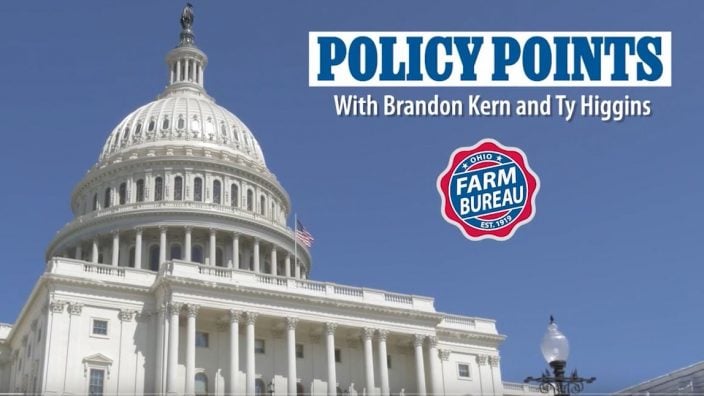Counties to hold legislative district meeting
State Senate Candidate and current State Rep. Susan Manchester, Rep. Tim Barhorst and Rep. Angie King have been invited as our legislative guests April 1.
Read MoreOhio Farm Bureau Sr. Director Communications and Media Relations Ty Higgins and Brandon Kern, sr. director of state and national policy, run down the many lines of the budget that would have an impact, both positively and negatively, on Ohio agriculture.
From funding for the Ohio Department of Agriculture for animal health, farmland preservation and meat inspection services, to supporting the expansion or H2Ohio and the need for workforce and ag education, there are a lot of things in the 2023 state budget that have Ohio Farm Bureau’s attention. For this Policy Points, Ohio Farm Bureau Sr. Director Communications and Media Relations Ty Higgins and Brandon Kern, sr. director of state and national policy, run down the many lines of the budget that would have an impact, both positively and negatively, on Ohio agriculture.
Ty Higgins A very special policy points of budget edition as we are hot and heavy into the 2023 state budget in Columbus. Brandon Kern joins us. He’s senior director of state and national policy with Ohio Farm Bureau.
Ty Higgins [00:04:43] So this is going to be a little bit different because this is strictly about the budget and we really just want to highlight what’s in the budget. What we like, thumbs up, what we dislike, thumbs down. And there are a couple of things in there that we may have to look at twice in order to get one way or another. But you’re going to give us just an overview of what Farm Bureau sees that’s positive in this budget. And some things that we see as a little iffy as we move forward to that budget deadline at the end of June.
Ty Higgins [00:05:31] So we’ll move forward here and do the budget edition of policy points, starting with the Ohio Department of Agriculture. Talking about animal health programs. Money for soil and water, farmland preservation. A lot of really important items as far as our policy and our priorities are concerned in this line of the budget.
Brandon Kern [00:05:54] Yeah, I’ll give this like a three quarters of the way thumbs up. There’s some mostly really good stuff here. The House passed budget funding level for the Department’s animal health programs in particular is something we’re really encouraged about. That started with the governor’s proposal. This is the whole program that is monitoring and helping us respond to animal diseases. And, you know, what a threat that is to animal agriculture out there right now. So seeing significant increases in the resources for that team within the Ohio Department of Agriculture is really going to be important for our livestock sectors of the industry. House kind of ticked down slightly, some funding levels for Ohio Soil & Water Conservation Districts. And the governor had proposed a big infusion of dollars into the Ohio Farmland Preservation Program, which was cut by the House. And that’s probably the biggest area of concern for us right now with with the Department of Agriculture’s budget. Obviously, farmland preservation is just so important right now. And that easement program is an important tool to allow farmers to preserve farmland forever. And so we were really encouraged to see the governor’s support for putting an infusion of dollars into that program. And we’re disappointed to see the House cut it. So we are still lobbying the Senate hard to try and get that done. And then I think the last piece I want to talk about here that we’re really working with our partners in the dairy sector is trying to make Ohio a little bit more competitive in terms of being able to attract a milk processor or dairy processors here to the state. And one of the things that we face is with processors and the logistics and the supply chain and the producers themselves all have pretty significant fees that they pay here in Ohio to help fund the operation of dairy inspection and all those steps of the process. A problem is surrounding states around Ohio either have nominal fees or no fees at all, which makes Ohio not very competitive when you’re trying to bring one of these processors to the state. And so trying to try to get Ohio on more equal footing with some of our surrounding states so we can attract a dairy processor to the state a little more effectively is important. We hear from dairy farmers all the time that, gosh, I got to take my milk a long way away to find a processor. We need more processors here in Ohio. And so that’s something we’re working on trying to address that.
Ty Higgins [00:08:31] The next line of the budget has to do with the Ohio Expo Center, the state fair and county fairs. About two years ago, Governor DeWine put together a task force, a 2050 task force for the Ohio Expo Center to kind of see where things need to go with that facility moving forward. Our recommendations that we’re taking taken to heart late last year were to keep the state fair in Columbus, make enhancements to the Expo Center and keep the footprint the way it is right there at the Ohio Expo Grounds. We saw some drawings in January of this year, and it looks like that the governor and his team are on track to make those improvements that we are hoping for right here in Columbus. Where are we as far as the budget goes with the Expo Center, the state fair and county fairs?
Brandon Kern [00:09:13] Big, big thumbs up in terms of the resources that are allocated for it. So the governor and the House also in their version, agreed to a pretty significant first down payment on execution of the renovation of the facility based on that Expo 2050 master plan that you were talking about. And so we’re excited to see that. You know, the one little hiccup here is that there was an amendment in the House version that was included that would require a study to be completed of the appropriateness of keeping the the State Fair and Expo Center inside Columbus or potentially looking at the viability of moving it outside of the metro area to one of the surrounding counties that border Franklin County and Columbus. We don’t support that. The fact is that this has really already been done. The Expo Commission partnered with an outside consultant to put together that 2050 master plan. And one of the things they specifically did was evaluate the appropriateness of keeping the Expo Center and the State Fair in Columbus. And the report says yeah, you want to keep your state fair in the heart of your state capital in a major metropolitan area where agriculture can most easily connect with the consumers who they need to connect with. And so we don’t support that amendment. And hopefully that gets pulled out of there so that we don’t slow this process down because we need to get moving on some of those facilites. If you’ve been out to the state fair in recent years, you know, we can we can use a little bit a little bit of updating out there. So we need to get moving with this important project.
Ty Higgins [00:10:56] One of the most important and successful programs we’ve seen over the past four years is H2 Ohio in northwest Ohio. Now, 24 counties are involved in the program, one and a half million acres enrolled in H2Ohio by over 2,000 farmers. So what are we looking at as far as the budget is concerned as far as H2Ohio goes?
Brandon Kern [00:11:15] And that’s another big thumbs up right now. The governor proposed the largest allocation yet for H2Ohio and the House maintained that funding level in their version of the budget. This is vitally important. The governor and all the stakeholders are working through that gradual process that was the stated intent of moving this to a statewide program. As you know, a lot of the early attention for this program and the resources were concentrated up in northwest Ohio, and rightly so, to be able to help farmers in that area address nutrient runoff and trying to address the algal bloom issue in Lake Erie. But now we are starting to see these resources go into different areas of the state as well. And it’s just as important, You know, there’s a lot of other watersheds in the state that that need attention and we’re taking that step in this budget with additional funding. So it’s a big thumbs up on H2Ohio.
Ty Higgins [00:12:11] More priorities for us in this budget include workforce and ag education, quite a bit of money, an increase of about 3% going to some of these programs. Where are we on these?
Brandon Kern [00:12:21] So that’s another thumbs up for us here. If you think about OSU Extension services, if you think about the Ohio Agricultural Research Research Development Center up in Wooster, Ohio State’s College of Veterinary Medicine, all of those entities getting increases in funding. One of the biggest storylines here is additional funding for career technical education. So the House passed appropriation levels of this new money, $100 million of new resources established to specifically expand career technical education programs and provide for equipment costs as well in that and there’s $200 million set aside specifically for construction projects that are needed around career technical education programs. We’re hearing from schools across the state that there are waiting lists for students to get in to joint vocational schools and career centers because of the facilities. They just don’t have the facilities to house all the kids who have an interest in career tech education. And so I think these additional resources are really important across the state so that we can get kids more access to hands-on education, which I think is badly needed for our economy and our workforce.
Ty Higgins [00:13:42] Something that Ohio Farm Bureau Foundation takes very seriously. You know, we’re expecting to see tens of thousands of openings in agriculture alone in the next 20 or 30 years. And we need all hands on deck to make sure we keep this industry moving forward in many facets, not just in the field, but also with software and hardware and everything else that we’re going to be seeing technologically as we advance through agriculture over the next few years. Another line on this budget that I really don’t know a whole lot about is the All Ohio Future Fund. Thumbs up or thumbs down there? And what is it?
Brandon Kern [00:14:10] So we’re going to kind of give this a little bit of a sideways thumb on this one. So this proposal is, as the governor proposed it in his version of the budget, is meant to create essentially development ready sites in different areas across the state to help address the need to quickly respond to companies who want to come locate in Ohio. And a lot of it was focused on helping redevelopment of sites that had once had a manufacturing facility or some other production facility on it. This kind of got up ended in the House where the funds were taken and specifically designated to allow for energy projects that supply mega development sites. So if you think about the Intel project that’s underway, if you think about the battery plant project in Fayette County that’s been announced, this kind of got scooped up by the House and said, we’re going to use this for all the energy projects that are needed to go into these mega sites. And one of the concerns we have is obviously there’s utilities that would use these funds. One of the things they can specifically use it for under the House language is land acquisition. And those entities also have eminent domain power. And so are we now providing state taxpayer dollars to fund utility companies to use eminent domain to take land from landowners? While we understand the need for these energy projects, that’s concerning. You know, if we’re going to just make it easier and easier to go the eminent domain route. I’m not sure that we want to go down that road from a policy standpoint. So we’ve got some concerns there.
Ty Higgins [00:16:04] Last time you and I talked, we did talk about taxes. Talked about the proposal to make a flat tax of 2.75% across Ohio. But there is a line in there about property taxes that we certainly weren’t very keen of. Where are we as far as taxes go in the state budget?
Brandon Kern [00:16:19] So the budget’s good, budget is a thumbs up versus what we were seeing in that piece of legislation, House Bill 1. The House is continuing to pursue tax reform, much like in House Bill 1, and they have combined the lowest two income tax brackets in the budget proposal and created one bracket that’s a 2.75%. So, for individuals, I think it’s like up to $92,000 a year in salary. It’s going to mean you’re going to fall into that 2.75 tax bracket. So they haven’t got quite to the flat tax concept, but they are combining those tax brackets and making it flatter and flatter. So that’s something that we can certainly support. We don’t have a problem with from an agriculture standpoint, and there are no property tax changes in this budget bill like what we saw in House Bill 1 with the elimination of the property tax rollback. We were good at thumbs up on this.
Ty Higgins [00:17:20] One of the largest items that we’ve seen in the budget so far is the Connect for Ohio Fund. Really don’t know a lot about that either. But where do we stand as a organization as far as that project goes?
Brandon Kern [00:17:29] So we are going to give this a thumbs up. This is specifically focused on rural highway development. And I think that’s important. The House-passed version created this fund and allocated $1 billion for it. So it’s a significant amount of money. But you just think, this is going to help provide improvements for rural roads and infrastructure that impact all of our members who are living in rural communities so specifically designated for rural areas. And we think that’s a positive thing. We are talking about the need for infrastructure development out there and improvement, and I think this is going to help.
Ty Higgins [00:18:09] Let’s take a step back. Where are we in the process? You mentioned that we got the House version out there. Where do we go from here?
Brandon Kern [00:18:15] So right now the House has passed their version of the bill. So, every budget bill starts out as an executive proposal from the sitting governor. The House takes that proposal, puts it into the legislative form. They debate it for about a month or so, and then they vote on it and move it to the Senate. The Senate is in the middle of their process now. And generally you would see the state Senate have the bill and consider it through the end of May into maybe that first week of June before they would move their version of the bill to their floor for a floor vote. And then we’ll have what’s called a conference committee process. So there will be representatives from the Senate and representatives from the House who will meet in a conference committee, and they will negotiate out the major differences in the two versions, the two legislative versions of the bill. Of course, the administration is a part of that dialog as well, but it’s the members of the legislature who actually make up the conference committee itself. And then, by July 1 is our constitutional deadline for having an operating budget for the next two years. So the legislature always has the goal of passing that piece of legislation before July 1 and give the chance for the governor then to sign it. And then one important aspect about the budget bill, it has appropriations in it. The governor has line item veto power. So he does not have to veto the entire bill as a whole. And he doesn’t have to just sign the entire bill as a whole. He actually has the ability to go in specific sessions and say, ‘no, don’t like that. Yeah, that’s okay. Down here. I don’t like this.’ And he can actually strike individual line items from the budget with line item veto power. So that’s always an interesting process to see what the governor decides to do with his line item veto power there at the 1st of July.

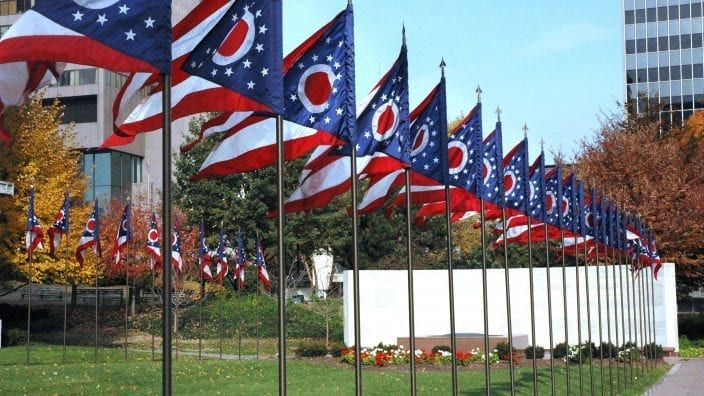
State Senate Candidate and current State Rep. Susan Manchester, Rep. Tim Barhorst and Rep. Angie King have been invited as our legislative guests April 1.
Read More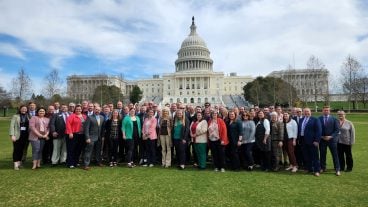
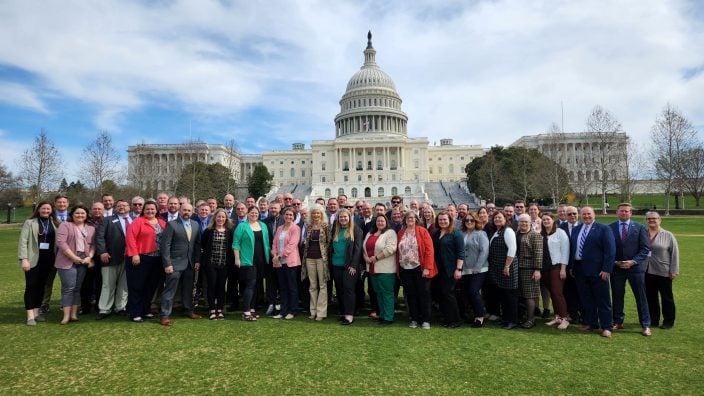
Ohio Farm Bureau’s farmer leaders plus members of the media and select Farm Bureau staff are at the nation’s capital March. 12-14, 2024 for the annual County Presidents Trip to Washington, D.C.
Read More
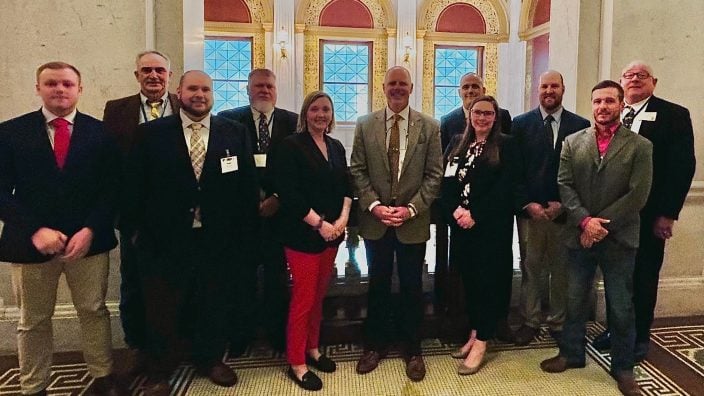
Empowering Ohio Agriculture: Insights from the Annual Ag Day at the Capital
Read More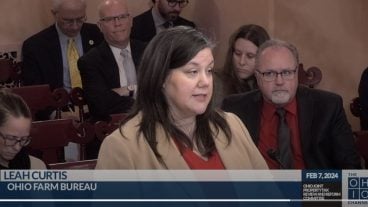
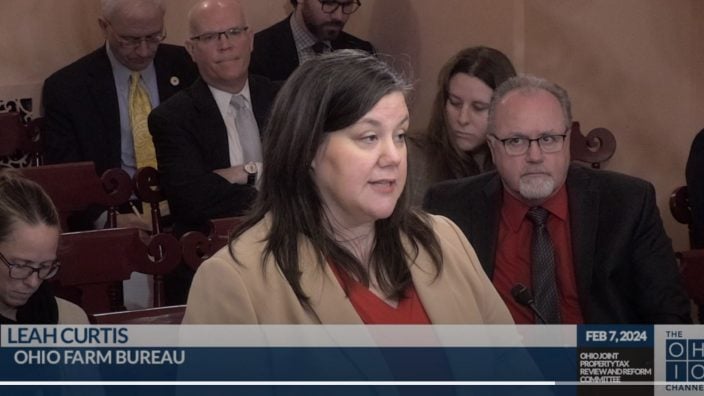
farmers are happy with the purpose and philosophy of the CAUV program, but all would prefer some more predictability in their values and more importantly, their tax bill.
Read More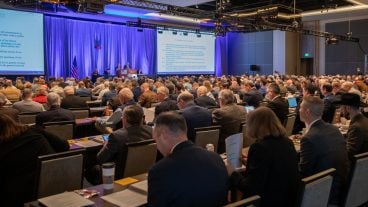
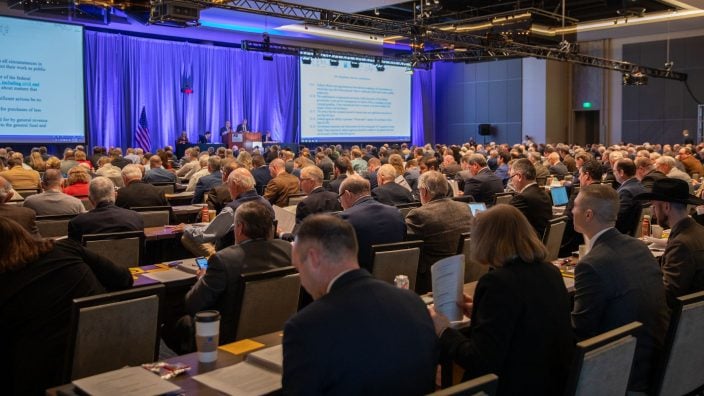
Ohio’s suggested policies touched on artificial intelligence, use of UAVs, and renewable energy.
Read More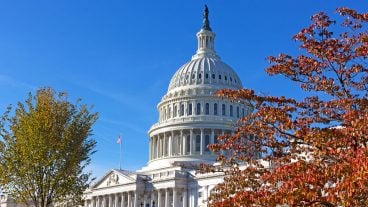
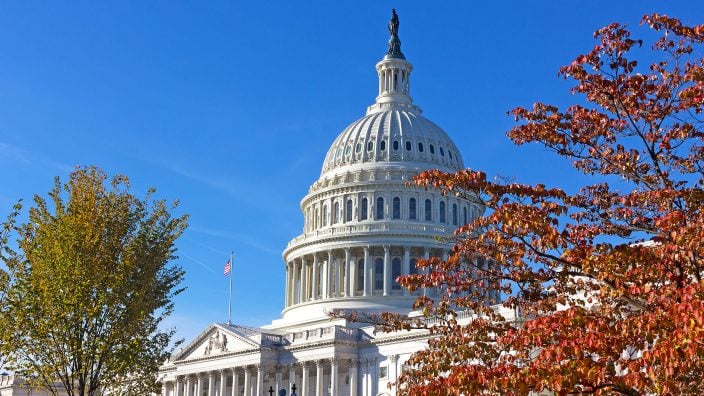
The program helps agricultural leaders ages 30-45 accelerate their engagement abilities and solidify their role as powerful advocates for agriculture. Apply by March 11, 2024.
Read More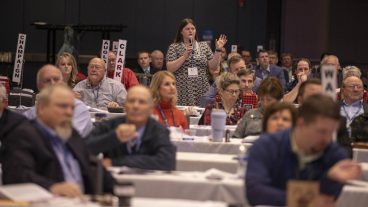
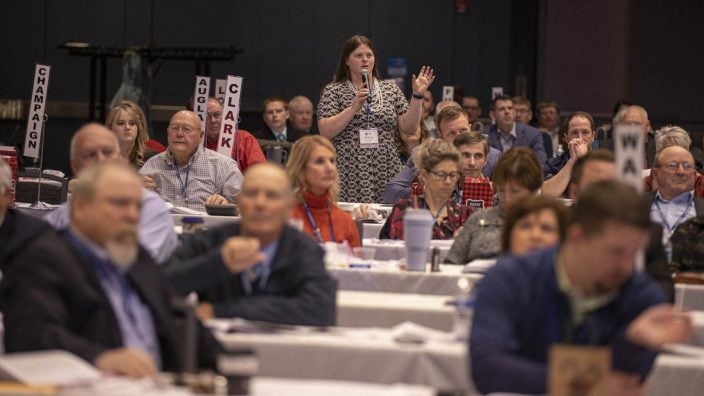
Farmland preservation and development pressure were just a few of the important topics discussed by the delegates at Ohio Farm Bureau’s 105th annual meeting.
Read More

Issue 2 would authorize and regulate the cultivation, processing, sale, purchase, possession, home growth, and use of recreational marijuana by adults over the age of 21.
Read More

‘Future Minded Farmer with Adam Sharp’ will provide insights on upcoming changes to farm estate tax structures set to take effect in 2026.
Read More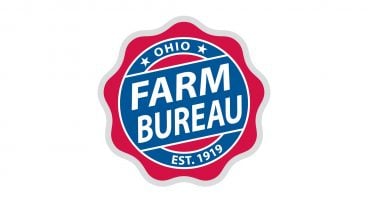
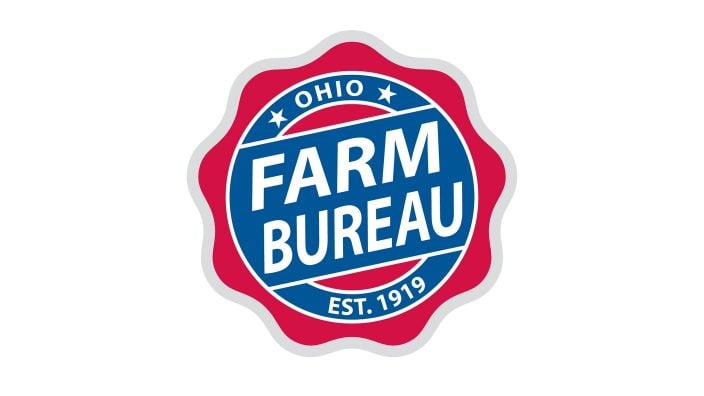
Issue 2 would authorize and regulate the cultivation, processing, sale, purchase, possession, home grow, and use of recreational marijuana by adults over the age of 21.
Read More